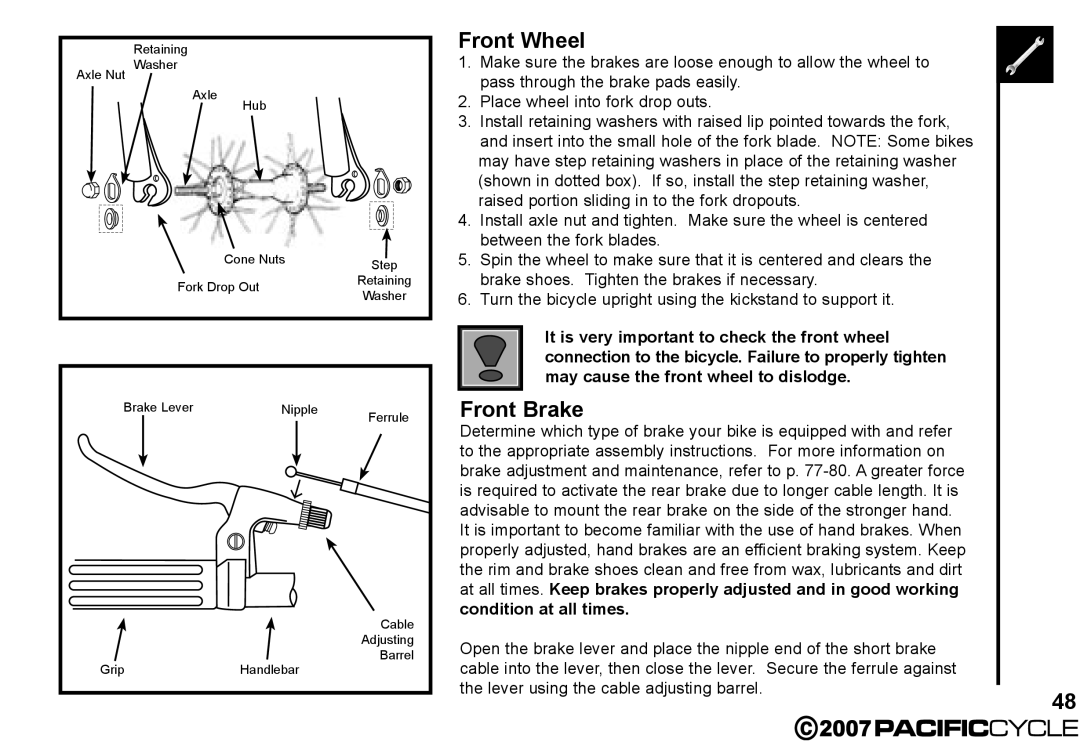
| Retaining |
|
|
Axle Nut | Washer |
|
|
| Axle | Hub |
|
|
|
| |
|
| Cone Nuts | Step |
|
|
| |
| Fork Drop Out | Retaining | |
| Washer | ||
|
|
| |
Brake Lever | Nipple | Ferrule | |
|
|
| |
|
|
| Cable |
|
|
| Adjusting |
|
|
| Barrel |
Grip |
| Handlebar |
|
Front Wheel
1.Make sure the brakes are loose enough to allow the wheel to pass through the brake pads easily.
2.Place wheel into fork drop outs.
3.Install retaining washers with raised lip pointed towards the fork, and insert into the small hole of the fork blade. NOTE: Some bikes may have step retaining washers in place of the retaining washer (shown in dotted box). If so, install the step retaining washer, raised portion sliding in to the fork dropouts.
4.Install axle nut and tighten. Make sure the wheel is centered between the fork blades.
5.Spin the wheel to make sure that it is centered and clears the brake shoes. Tighten the brakes if necessary.
6.Turn the bicycle upright using the kickstand to support it.
It is very important to check the front wheel connection to the bicycle. Failure to properly tighten may cause the front wheel to dislodge.
Front Brake
Determine which type of brake your bike is equipped with and refer to the appropriate assembly instructions. For more information on brake adjustment and maintenance, refer to p.
Open the brake lever and place the nipple end of the short brake cable into the lever, then close the lever. Secure the ferrule against
the lever using the cable adjusting barrel.
48
